Content
150th anniversary of the death of Justus von Liebig
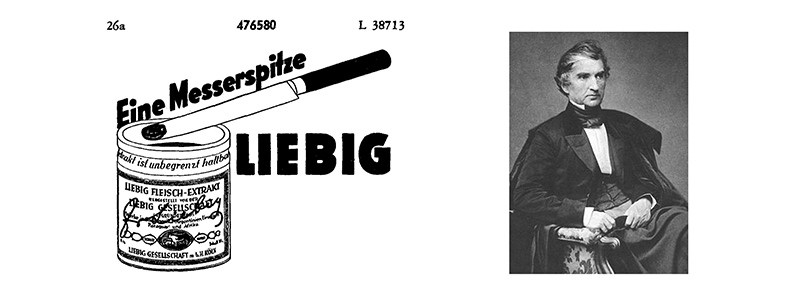
DE trade mark 476580, portrait of Justus von Liebig by Franz Hanfstaengl
A chemist feeds the world
He was one of the most famous and influential natural scientists of the 19th century: Justus Liebig. His name is still known far beyond specialist circles today thanks to his meat extract. But what is far more significant is that he practically single-handedly invented agrochemistry, or more precisely mineral fertilisation, which multiplied agricultural yields and simplified the world's food supply.
Liebig, who was born in Darmstadt on 12 May 1803, is known for several other groundbreaking achievements. Yet his path to science was quite bumpy: he dropped out of Gymnasium at an early age. A teacher is said to have scolded him: "You're a blockhead! You're not even good enough to be a pharmacist's apprentice!" But because Liebig liked to experiment in the laboratory of his father, who was a druggist and dye merchant, as a child, he took up an apprenticeship as a pharmacist in defiance of the teacher. But this too came to an early end after a few months - allegedly because Liebig had set the roof on fire while experimenting with oxyhydrogen gas.
Liebig let it bang
Somehow, however, Liebig still managed to be admitted to study chemistry at the University of Bonn in 1820. In 1821 he followed his professor to the University of Erlangen, but had to flee the city in February 1822 because he had been involved in student riots. He went to Paris to the Sorbonne, at that time the centre for chemistry par excellence. Here he came to the attention of the great world explorer and scientist Alexander von Humboldt. He recommended Liebig (21 years young) for a professorship in Giessen, which he took up in 1824. Liebig had previously written his doctoral thesis on the subject of fulminic acid, among other things - so the burning roof had paid off...
In Giessen, Liebig became one of the most famous scientists of his time within the following three decades. Liebig revolutionised the study of chemistry by enforcing the unity of research and teaching. He established a systematic curriculum and supplemented the theoretical lectures with practical exercises. His popular teaching attracted more and more students even from abroad and became a model for the university education of natural scientists worldwide.
Fertiliser for the world
Empirical research was carried out on a grand scale in his Giessen laboratory. Organic chemistry was an important field of research. Liebig succeeded in decisively improving elemental analysis, which made it much easier to decipher the composition of organic substances. He was helped in this by his self-developed so-called five-sphere or Kali apparatus. With its help, he also discovered a liquid in 1831 that later became known as chloroform.
Liebig also discovered that plants need inorganic nutrients, i.e. salts. In 1840, his book "Die organische Chemie in ihrer Anwendung auf Agricultur und Physiologie" (Organic Chemistry in its Application to Agriculture and Physiology) was published, which marked the beginning of modern mineral fertilisation and agrochemistry. In the long run, it changed the nutrition of the whole world.
Lured to Munich
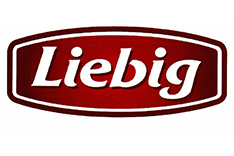
EM 001519677, trademark of a Belgian food company
His scientific achievements, but also his many publications, made him internationally famous. His sovereign elevated him to the baronetcy of the Grand Duchy of Hesse in 1845. He always turned down calls from famous universities, until the Bavarian king succeeded in luring him to Munich in 1852. Maximilian II, who brought many scientific capacities, the so-called "northern lights", south to the Bavarian capital, lured Liebig with a custom-built institute and laboratory.
Immortal thanks to meat extract
In Munich, his fame rose even higher; numerous honours were bestowed on the tireless chemist. But the fact that his name is still known outside specialist circles today is thanks to a sick child, of all things. For the daughter of a friend, who was unable to eat solid food because of cholera, he developed a "fortifying food": through a lengthy process of soaking and reducing beef, a thick "meat extract" was created.
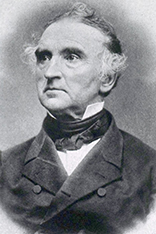
Liebig around 1866
It was this rather incidental invention that made his name immortal. The "Extractum Carnis" first appeared on the market as a tonic for the sick in pharmacies from 1864. Later, Liebig entered into a cooperation with a resourceful German entrepreneur who was able to produce large quantities of the meat extract cheaply in Uruguay (32 kilos of beef were needed for one litre of extract!). This made it possible to market the product on a large scale worldwide at affordable prices. The meat extract was the forerunner of all stock cubes and instant soups - and also about the only invention that actually made Liebig money. The extract's popularity was also helped by the "Liebig pictures" that were enclosed in the packages and became coveted collector's items.
Baking powder and baby Food
To this day, international food companies use Liebig's name as a trademark, for example 001519677EM (registered by GB Foods from Belgium in 2000). Other Liebig trademarks are or were, for example, 23161DE (now cancelled trademark from 1896); 38467DEtrademark from 1899 (cancelled in 2001) or 476580DE trademark from 1934 (cancelled in 2005).
Liebig also invented baking powder, but it was only years later that it became a great commercial success thanks to August Oetker's marketable preparation. In addition, Liebig is practically the inventor of baby food, as he developed a "soup for babies".
Justus von Liebig died 150 years ago, on 18 April 1873, a highly honoured and world-famous man in Munich - a few years before the foundation of a German patent office, where he certainly would have had many of his inventions protected.
Liebig as an expert: death by flame in Darmstadt
Liebig's name is also associated with a piece of criminal history. On 13 June 1847, a young man in his home town of Darmstadt had observed flames in the house next door in Neckarstraße, which went out again after a short time. A short time later, Countess Emilie von Görlitz was found dead in her flat - burnt to death! At first, the police could not make sense of what had happened. It was assumed that it must have been a case of spontaneous human combustion, which was still mentioned in some medical textbooks at the time (and still haunts the media today). When the countess's servant came under suspicion, Liebig was called in as an expert witness in a complicated circumstantial trial. He proved in court that spontaneous combustion of the human body is completely impossible. The servant was convicted as a robber-murderer. Later he confessed to the crime.
Text: Dr. Jan Björn Potthast; Pictures: DPMAregister, poblic domain via Wikimedia Commons, Wilhelm Trautschold public domain via Wikimedia Commons, via Wikimedia Commons, DPMAregister, public domain via Wikimedia Commons, via Wikimedia Commons
Last updated: 10 December 2025

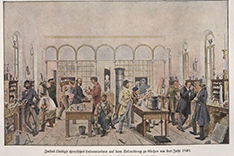
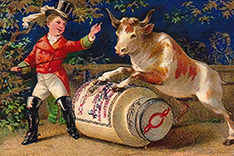
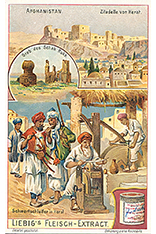
Not only protecting innovations
Social Media